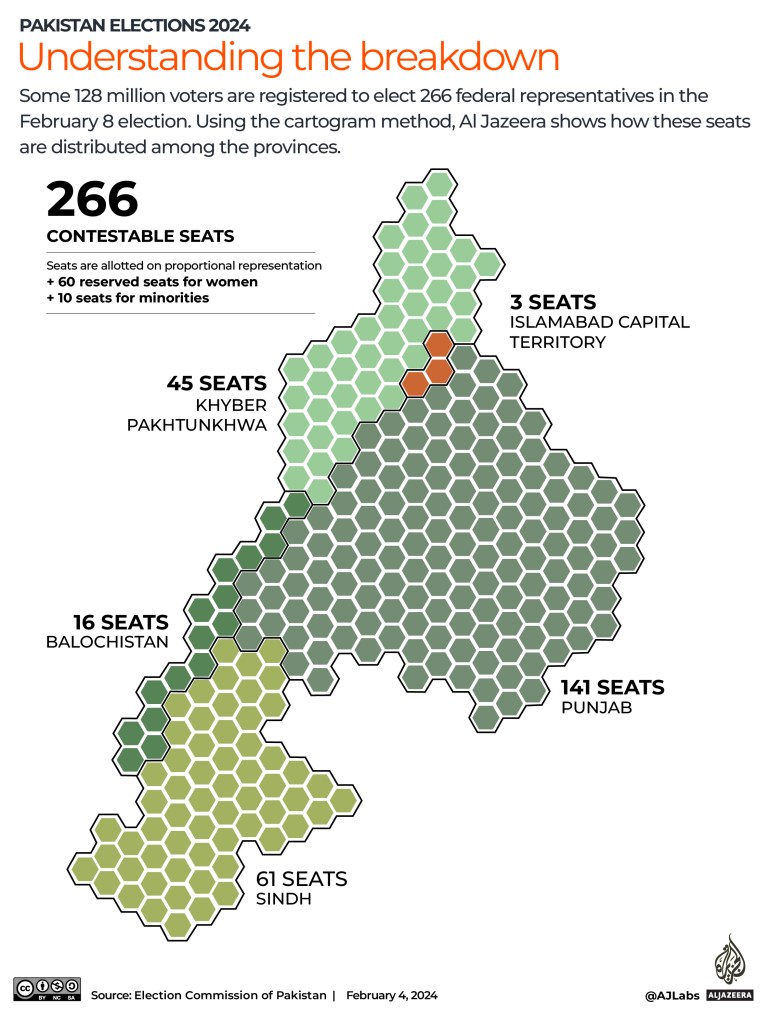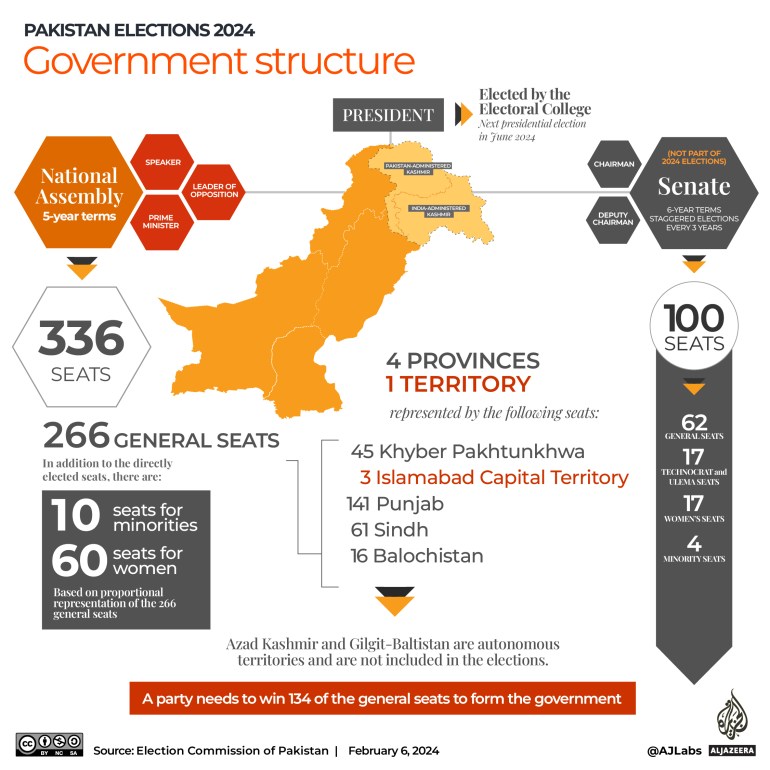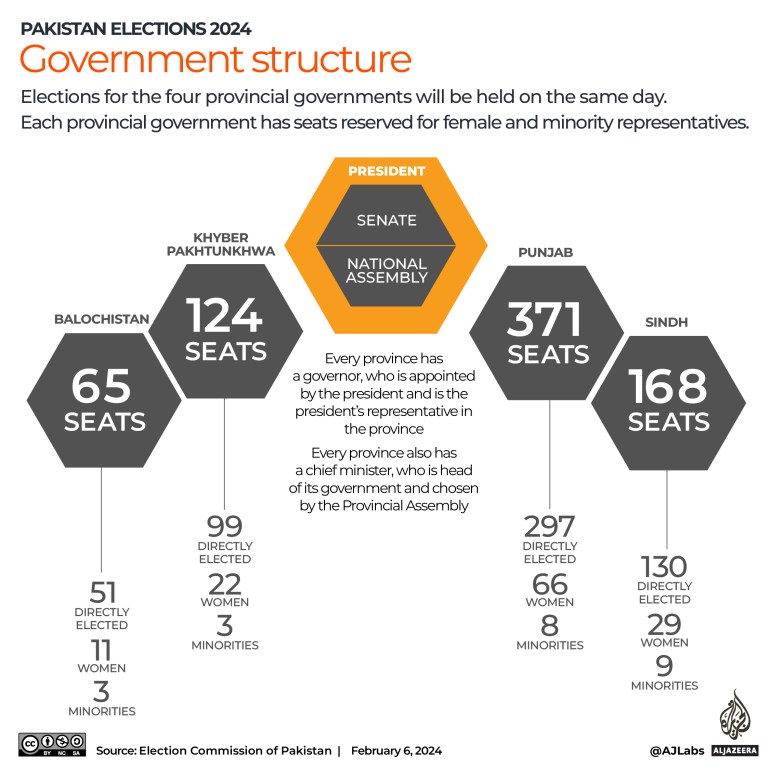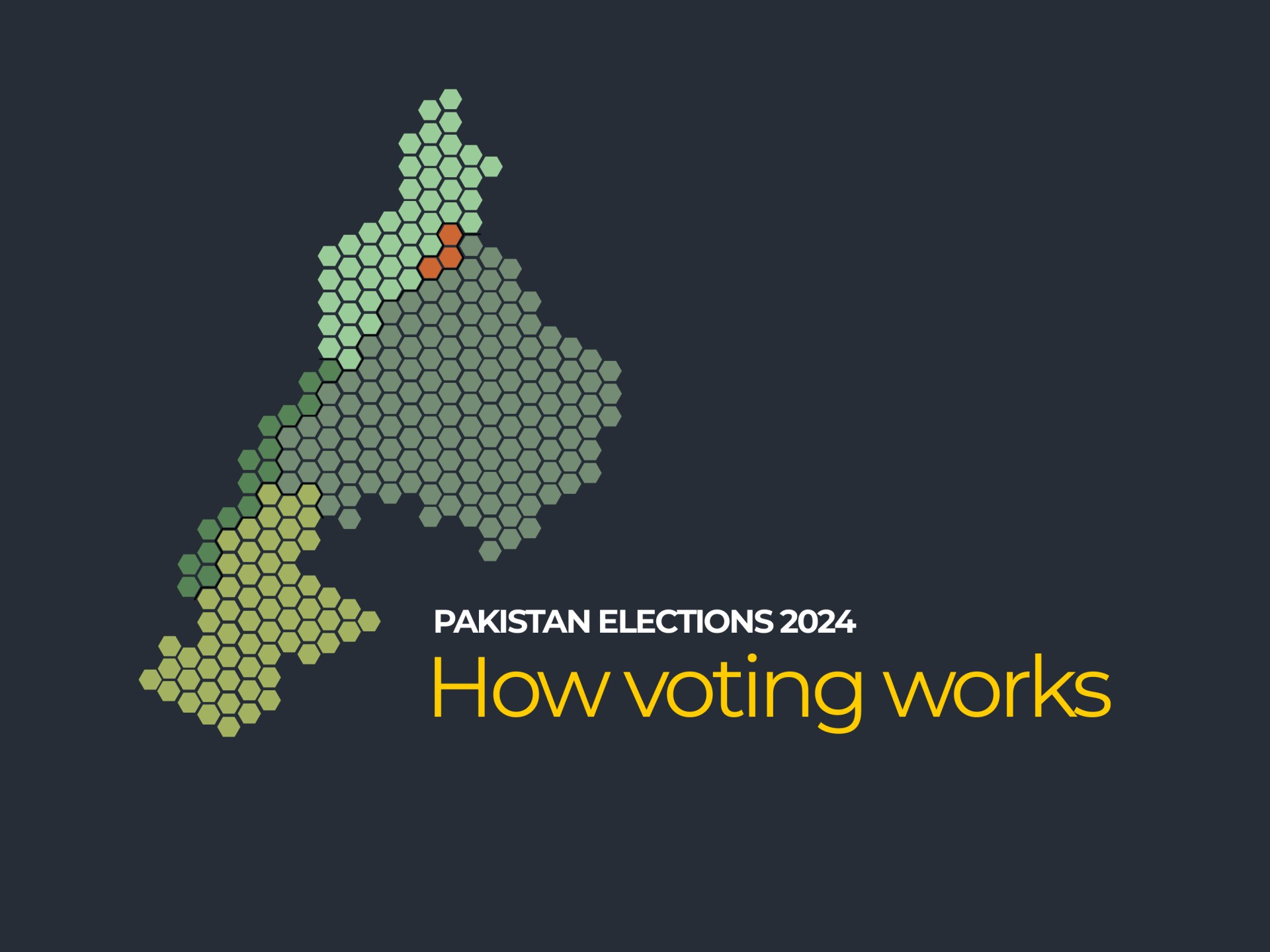Pakistan election 2024: How the voting works | Elections News
EXPLAINER
Pakistan will vote on February 8 for national and state legislatures amid political fluidity and steep economic challenges.
On Thursday, 128 million Pakistanis will get to elect their country’s next government, and also the legislatures of the nation’s four provinces.
These are Pakistan’s 12th general elections — and the country’s latest attempt to deepen democratic roots. Pakistan’s powerful military establishment has ruled directly for more than three decades of the country’s journey as an independent nation since 1947. And it has influenced and intervened in politics even when not directly in power — a fact acknowledged by former army chief Qamar Javed Bajwa in November 2022.
Those allegations against the military’s involvement in politics have been amplified in recent weeks, amid a crackdown on former Prime Minister Imran Khan and his Pakistan Tehreek-e-Insaf (PTI) party. Khan is in jail, unable to contest, while the PTI has been denied the use of its electoral symbol, the cricket bat. Yet, at least officially, civilian leaders have now ruled directly for the past 16 years — the longest such stretch in independent Pakistan’s history.
So how will the elections on February 8 work?
The when, where and what of voting
Despite the lukewarm campaign season for the elections, the polls will elect a government that will be responsible for bringing stability to a country racked by a volatile political landscape, increasing incidents of violence, and an economy in turmoil.
Voters will also elect legislators to their provincial assemblies. So in effect, each voter can cast two votes — one for the National Assembly, and another for the provincial assembly.
The voting process is scheduled to begin at 8am (03:00 GMT) and will continue, without a break, till 5pm (12:00 GMT). Those already in the queue to vote at 5pm will be allowed to vote even if that extends the process. If some polling stations witness violence or other disruptions, officials can extend voting to allow voters to cast their ballots.
The counting will begin soon after voting closes, with tentative results expected to emerge within a few hours.
How are the National Assembly seats distributed?

Based on the results of the national census conducted in 2023, the constituencies went through a delimitation process. The boundaries of many constituencies were altered, and the number of seats changed — coming down from 272 in total to 266 in the National Assembly.
The northwestern Khyber Pakhtunkhwa province saw an increase of seats from 39 to 45. Punjab, the largest province by population, retained 141 seats. With more than half of the National Assembly seats, Punjab becomes the biggest battleground on February 8.
Sindh, the second-most populous province, and Balochistan, the country’s largest but most impoverished province, both retained their previous National Assembly seats at 61 and 16, respectively.
The Islamabad Capital Territory has three seats, as it did previously. In addition, 60 seats are reserved for women and 10 for minorities, which are allotted on the basis of 5 percent proportional representation in the National Assembly.
What about the upper house of parliament?

The Senate, the upper house of Pakistan’s parliament, has 100 seats. But unlike the National Assembly, the Senate is not elected directly. Its members are picked by the provincial assemblies.
While the National Assembly has a tenure of five years, the Senate’s tenure is six years. Elections to the Senate are staggered and held every three years.
The Senate, the National Assembly and the country’s provincial assemblies combine to form the electoral college, which in turn elects Pakistan’s president.
What about provincial elections?

In addition to electing the National Assembly, the assemblies of the four provinces – Balochistan, Khyber Pakhtunkhwa, Punjab and Sindh – will elect representatives, who will in turn vote in a chief minister.
Proportionate to Punjab’s representation in the National Assembly, it also has the largest legislature with 371 seats. Sindh’s assembly has 168 seats, followed by Khyber Pakhtunkhwa with 124 seats and Balochistan with 65.
As in the National Assembly, some of the seats in the provincial legislatures are reserved for women and minorities. These are distributed proportionately to parties based on their representation in the legislature.
Check out our Latest News and Follow us at Facebook
Original Source







